NSW and QLD beaches close, warning issued for parts of NSW, Victoria and Tasmania over tsunami fears after volcano erupts
Dramatic footage has emerged showing how countries around the world have been affected by the volcano eruption near Tonga.
Environment
Don't miss out on the headlines from Environment. Followed categories will be added to My News.
A massive volcanic eruption in Tonga that triggered tsunami waves around the Pacific caused “significant damage” to the island nation’s capital and smothered it in dust, but the full extent was not apparent with communications still cut off on Sunday.
The eruption on Saturday was so powerful it was recorded around the world, triggering a tsunami that flooded Pacific coastlines from Japan to the United States.
The capital Nuku’alofa suffered “significant” damage, New Zealand Prime Minister Jacinda Ardern said, adding there had been no reports of injury or death but a full assessment was not yet possible with communication lines down.
Dramatic satellite images showed the long, rumbling eruption of the Hunga Tonga-Hunga Ha’apai volcano spew smoke and ash in the air, with a thunderous roar heard 10,000 kilometres away in Alaska.
The eruption triggered tsunamis across the Pacific with waves of 1.74 metres measured in Chanaral, Chile, more than 10,000 kilometres away, and smaller waves seen along the Pacific coast from Alaska to Mexico.
In California, the city of Santa Cruz was hit by flooding due to a tidal surge generated by the tsunami, videos retweeted by the US National Weather Service showed.
Peru closed 22 ports as a precaution while waves of around 1.2 metres hit along Japan’s Pacific coast.
Videos show the volcano’s impact around the world
WATCH: Tsunami from volcano eruption in Tonga reaches Peru pic.twitter.com/U9aj9cqGt2
— BNO News (@BNONews) January 16, 2022
Beachgoers ignore warnings
Photographs have emerged showing beachgoers flocking to Bondi Beach despite a tsunami warning that was sparked by a volcanic eruption off the coast of Tonga on Saturday afternoon.
Australians were warned not to go into the water on Sunday, with beaches closed across NSW and Queensland over concerns that a tsunami could reach Australian shores.
Authorities issued widespread marine warnings, including for Tasmania.
On Sunday morning, NSW Premier Dominic Perrottet confirmed: “Our beaches are closed, please do not swim”.
However, it’s clear people weren’t heeding the warnings, with many NSW beaches being inundated with visitors.
Photographs taken on Sunday show throngs of people at Bondi Beach.
Other beaches around NSW were busy, including Coogee and Brighton beaches which were packed with people on Sunday morning.
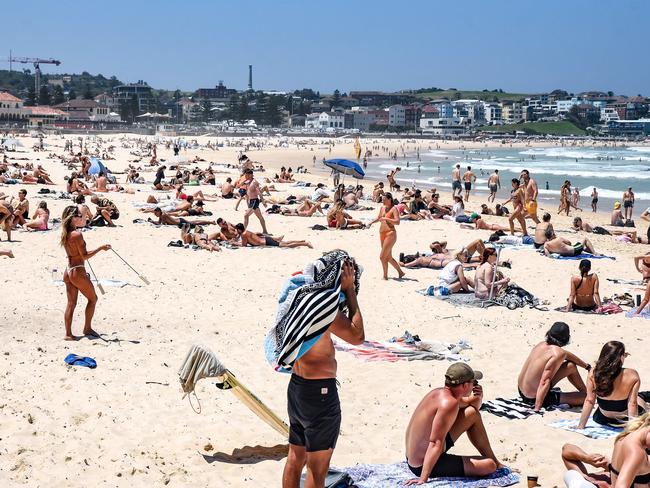
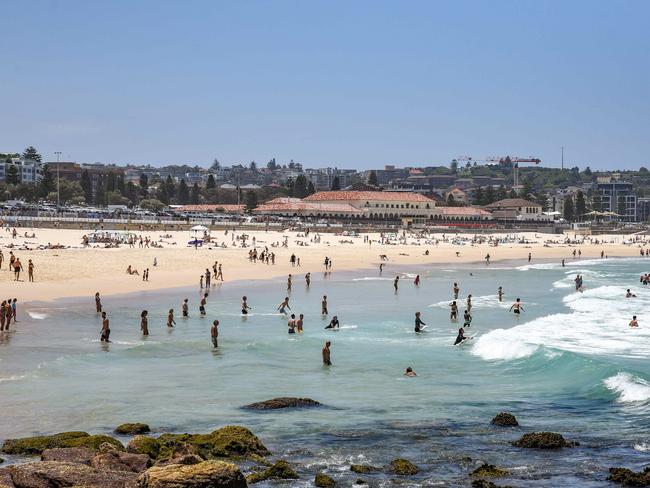
Fronting the media on Sunday morning, NSW SES Commissioner Carlene York said the beach closures were necessary after a rock fisherman went into the water despite the warnings, and soon needed rescuing.
“The beaches have been closed today,” she said early on Sunday.
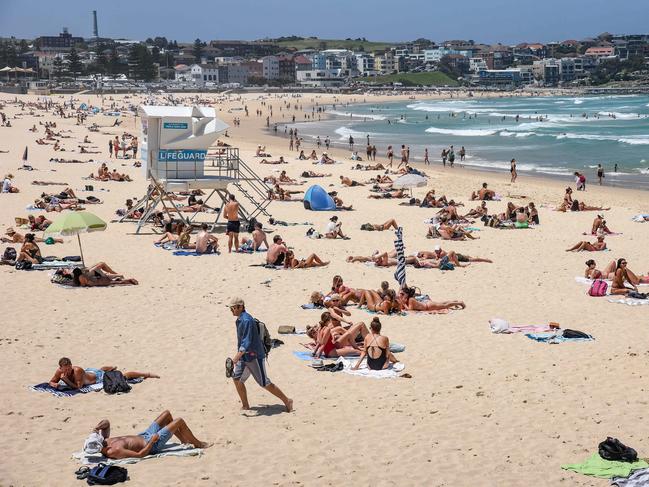

“And a lot of you will be disappointed that it’s going to be a very humid day and they want to get into the beach but to protect this community, the beaches are closed and Surf Life Saving have removed the flags … making sure that people don’t go down to the water.”
The announcement was made just before 10am and the closures are expected to stay in place for at least six hours.

Ms York said her team already had to use valuable resources today to save the rock fisherman.
“Please don’t go down to the beaches, please don’t go rock fishing. When you are placing yourself in danger [you are] therefore placing the volunteers and emergency services rescue in danger as well,” she said.
In a statement to news.com.au, the NSW SES said: “To keep members of the community safe, local beaches have been closed.
“NSW SES are asking members of the public to stay out of the water until it is safe to do so.
“Members of the public looking to rivers as alternative to swimming in the ocean are reminded that due to heavy rain some river systems may be swollen and present dangerous swimming conditions.”

Tsunami threat ‘has passed’
The tsunami threat from the powerful Tonga volcano eruption has passed, the Pacific Tsunami Warning Center said on Sunday, after powerful waves flooded coastlines from Japan to the United States.
“Based on all available data, the tsunami threat from this volcanic eruption has now passed,” the PTWC said, adding authorities at “impacted coastal areas should monitor … to determine when it is safe to resume normal activities”.

Warning of ‘weeks of explosions’
The massive eruption of the Hunga Tonga-Hunga Ha’apai volcano off the coast of Tonga was felt from more than 8000 kilometres away but it might only be the tip of the ice berg.
One expert has warned that the world could be facing weeks of shockwaves, including more tsunamis, because more violent eruptions might be on the way for the volatile volcano.
The eight-minute eruption of the Hunga Tonga-Hunga Ha’apai underwater volcano just after 3pm yesterday sent shockwaves around the world and caused tsunamis in Tonga, Japan and the US.
Shane Cronin, a volcanologist from Auckland University, warned in an article on The Conversation: “It remains unclear if this [the Saturday afternoon eruption] is the climax of the eruption …
“We could be in for several weeks or even years of major volcanic unrest from the Hunga-Tonga-Hunga-Ha‘apai volcano. For the sake of the people of Tonga I hope not.”
The science professor explained that volcanoes often build up to their largest eruption. Before Saturday, the Hunga Tonga-Hunga Ha’apai volcano had experienced two other recent eruptions before the devastating one, first on December 20 last year and then three days ago, on January 13.
Each of these was much less severe than the one over the weekend which caused multiple tsunamis in its wake.
Prof. Cronin added that the volcano only pokes out 100 metres above sea level but in reality it is around 1800m high and 20km wide lurking just under the depths of the water.
The volcano only produces a massive explosion once every thousand years. The last one occurred around 1100 CE.
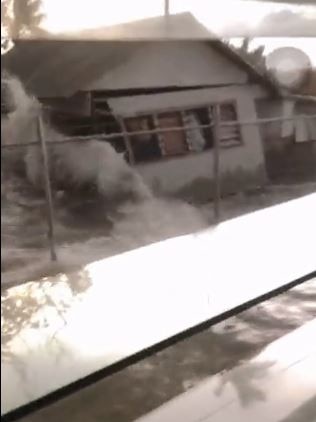
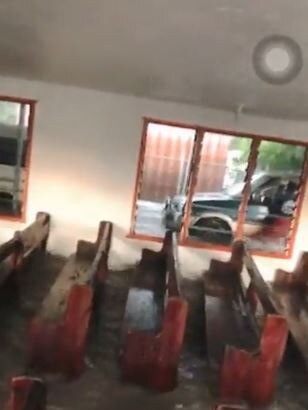
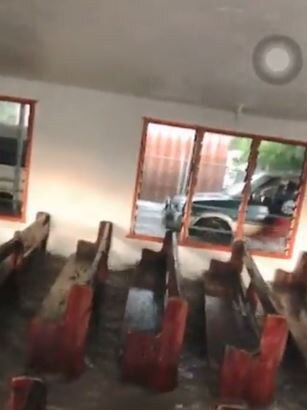
Damage of Tonga volcano eruption not yet known
New Zealand Prime Minister Jacinda Ardern revealed in a worrying admission that her government was finding it hard to reach their Tongan counterparts amid damage from the volcano eruption.
Just past 1pm AEDT, Ms Ardern said she could confirm that Tonga’s royal family were alive and safe but beyond that was essentially in the dark.
“Communications with Tonga remain very limited and I know that it‘s causing a huge amount of anxiety for the Tongan community here who are trying to get a hold of loved ones back home,” she said.
“ The main communications cable has been impacted, likely due to the loss of power and that is why communications have been limited.
“Telecommunication authorities are working urgently to restore communication.”
There is also widespread speculation that Tongans might be running out of water as a result of the crisis.
New Zealand’s defence force weren’t even able to use planes to check on the situation of their neighbours because of ash clouds from the eruption.
It’s “not safe or viable to begin the reconnaissance, the ash clouds were estimated to be 63,000 feet higher than the aircraft can fly,” she explained.
The New Zealand government has offered NZ$500,000 (A$471,000) in assistance to help Tongan authorities recover from this natural disaster.
Picture captures Sydney-siders blatantly flouting rules
Despite NSW residents being warned off beaches, some swimmers were spotting enjoying the Coogee ocean pools on Sunday afternoon in a clear breach of the rules.
Although they aren’t technically in the ocean, it’s still dangerous to simply be on a beach at the moment and goes against advice from emergency services.
NSW SES Commissioner Carlene York said the more people at the beach — even if they weren’t in the water — the more clogged the roads would get and the difficult it would be to get people to safety if a tsunami wave did come.
“We‘ve had people getting their vehicles and go down to the beach, that is exactly the wrong thing to do,” she said.
“We want to make sure that whoever is in the nearby facility, we can evacuate people safely and have the roads as clear as possible and make sure people are safe. Once the wave — if it does come — is coming, it is very vital and very urgent to get people away from these areas.
“I’d encourage all members of the community not to go out boating, rock fishing or put themselves in danger. If they are on boats, stay away from the shore if they can’t come back into safety.”
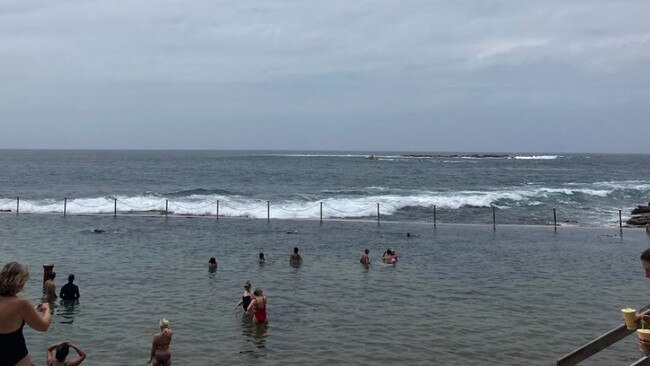
What places have had a tsunami warning?
The tsunami warning applies to parts of Australia’s east coast and in Tasmania, with some residents on Lord Howe Island evacuated.
In NSW, the marine warning applies to the entire east coast.
It also covers Victorian areas of Lakes Entrance to 60nm east of Gabo Island including East Gippsland Coast, as well as Macquarie Island.
In Tasmania, a marine warning applies to the northern tip of Flinders Island to South East Cape including East of Flinders Island, Banks Strait and Franklin Sound, Upper East Coast, Lower East Coast, South East Coast, D’Entrecasteaux Channel, Derwent Estuary, Frederick Henry Bay and Norfolk Bay and Storm Bay.
“In areas with a threat to the marine environment only, emergency authorities advise people to get out of the water and move away from the immediate water’s edge of harbours, coastal estuaries, rock platforms and beaches,” the advice states.
In Queensland, the tsunami warning has now been cancelled.
#QLD#Tsunami Warning cancelled. #Tsunami Warnings for the marine environment continue for #NSW, #TAS, #VIC, #LordHoweIsland, #NorfolkIsland, #MacquarieIsland after volcanic eruption near TONGA ISLANDS. Latest info here: https://t.co/Tynv3ZQpEq. pic.twitter.com/MNkCoIxtkM
— Bureau of Meteorology, Australia (@BOM_au) January 15, 2022
VIDEO: Bondi Beach evacuated after Tsunami Alert in Australia #Tsunami#TsunamiWarning#tsunamitongahttps://t.co/0Z9r9hfBjU
— Daniel Shaw (@DanielShawAU) January 15, 2022
Queensland beaches also closed
All south eastern Queensland beaches — from Rainbow Beach, near Gympie, to Rainbow Bay on the NSW border — have also closed for the day despite the marine warning being lifted for the state just before 11am.
Surf Life Saving Queensland made the decision to keep beaches closed on Sunday as water conditions were still expected to be rough for the rest of the day.
“Conditions are unusual and unstable,” a statement from Surf Life Saving Queensland said.
“SLSQ services are asking the general public to not enter the water.”
The Bureau of Meteorology said that surf conditions still remained dangerous for the northern state.
“Small unusual tsunami waves may continue but are no longer expected to be dangerous, however a hazardous surf warning is still in effect for the Fraser Island Coast, Sunshine Coast and Gold Coast waters due to ex-tropical Cyclone Cody,” the bureau stated.
“Tsunami warnings for Queensland are therefore cancelled.”
1.27m wave recorded in Australia
In an interview with the ABC on Sunday morning, Sarah Scully, a senior meteorologist at Australian Bureau of Meteorology, revealed that the east coast was being lashed by massive waves.
One of the waves was a whopping 1.27 metres in length, she said.
For context, Tonga and Japan both recorded 1.2 metre tsunami waves on Saturday.
Australia’s 1.27 metre wave — which was not a tsunami — was recorded at 9pm Saturday night at an offshore island but waves have become smaller since then.
“It did peak at 9pm and we have seen that the waves just subsequently slowly decreasing over time,” Ms Scully assured viewers.
A 0.82 metre was also recorded in the Gold Coast, a 0.77 metre wave and 0 .65 metre wave both occurred along the NSW south coast.
Other marine warnings issued by the Bureau of Meteorology have also been downgraded.
Queensland’s marine warning has been cancelled entirely while the land threat at Norfolk and Lord Howe Island has been downgraded to just a marine threat.
The SES emphasised that they were more concerned about hazardous surf conditions than an actual tsunami hitting the coastline.

Wild scenes as Bondi Beach evacuated
The tsunami warning hit close to home for Sydneysiders on Saturday night after visitors to the city’s iconic Bondi Beach were forced to evacuate.
Around midnight, one video captured police and SES rushing to Bondi Beach with megaphones telling revellers to get away from the promenade immediately.
“Off the beach please,” one SES worker can be heard saying. “There is a marine-based tsunami alert. Please get off the beach.”
Another SES worker tells beachgoers “I need you off the promenade.”
The entry was also roped off with police tape.
About a dozen people, including a mother with her young daughter and a surfer, hurried off the beach.
NSW Police confirmed to news.com.au that: “Officers from the eastern suburbs local area command assisted the NSW State Emergency Service with evacuations of Bondi Beach and the attached promenade.”
Despite this, people were still spotted at the beach early on Sunday before the beach was once again closed.
Just drove past Bondi Beach on the way home.. the SES has closed the whole promenade is closed due to the tsunami warning âš ï¸ #prayfortonga 🇹🇴
— Ela Mitry (@ela_mitry) January 15, 2022

Incredible footage as volcano eruption felt 8000km away
The tsunami warnings were issued after the eight-minute eruption of the Hunga Tonga-Hunga Ha’apai underwater volcano, which has already generated tsunamis in Tonga, the US and one in Japan.
“A 1.2 metre tsunami wave has been observed at Nukualofa [the capital city of Tonga],” Australia’s Bureau of Meteorology tweeted on Saturday.
It followed another tsunami in the nation on Friday with a maximum wave of 30 centimetres.
In Japan, authorities recorded a 1.2 metre tsunami in the Kominato district of Amami-Oshima Island in Kagoshima Prefecture late on Saturday.
This was followed by a 1.1 metre wave at Kuku Port in Iwate Prefecture.
Japan has ordered the evacuation of residents in seaside areas and predicted waves as high as 3m in its Amami and Tokara islands and also its Iwate Prefecture.
Satellite footage captured the moment the volcano exploded.
Tonga's Hunga Tonga volcano just had one of the most violent volcano eruptions ever captured on satellite. pic.twitter.com/M2D2j52gNn
— US StormWatch (@US_Stormwatch) January 15, 2022
The shockwaves from the volcano were felt as far as California in the US, more than 8000 kilometres away.
A 1.2 foot wave was observed in Nikolski, Alaska, while a one foot wave hit Atka, Adak and King Cove, Alaska on Saturday local time (Sunday AEDT).
The US has warned people not to enter beaches along its west coast.
Below, a video shows a sea wall in California being flooded by massive waves.
Water is flooding Beach Blvd here in Sharp Park. Wave after wave crashing over the promenade. Pier is closed but I’m shocked the road is still open. #CAwx* @NWSBayArea@RobMayedapic.twitter.com/6BQ8Y1OGq7
— Savannah 💉💉💉Savvy✨Peterson (@SavIsSavvy) January 15, 2022
The Hunga Tonga volcano eruption was so powerful that it has sent a shockwave/pressure wave thousands of miles across the globe. My weather station in San Carlos, California, over 5,000 miles away, recorded the wave around 4AM as it pushed east across the United States. pic.twitter.com/jggFxx9bbZ
— US StormWatch (@US_Stormwatch) January 15, 2022
Updated warning for Australia
The Joint Australian Tsunami Warning Centre warning is current as of 7.04am AEDT on Sunday, with authorities providing regular updates.
It comes after frightened Tongans fled to higher ground on Saturday after a massive volcanic eruption around 3.10pm — heard in neighbouring countries — triggered the area’s second tsunami in as many days.
The NSW State Emergency Service has ordered the evacuation of low-lying parts of Lord Howe Island with people advised to move to assembly areas.
“For low-lying coastal areas of Lord Howe Island there is a threat of major land inundation, flooding, dangerous rips, waves and strong ocean currents commencing after 7:30pm (local_time) Saturday and persisting for several hours,” the advice says.
They have since issued another statement confirming that the same warning remains in place.
Evacuation Order Issued for #LordHoweIsland. Land Threat for #NorfolkIsland. Marine Threat for #NSW, #QLD, #TAS, #VIC, #MacquarieIsland. #Tsunami Warning after volcanic eruption near TONGA ISLANDS. Latest info here: https://t.co/Tynv3ZQpEq. pic.twitter.com/wliDqjgYbB
— Bureau of Meteorology, Australia (@BOM_au) January 15, 2022
We are continuing to monitor the #tsunami event after a volcanic eruption near #Tonga. Land threat warning still current for Lord Howe & Norfolk Is, marine threat warning still current for parts of Qld, NSW, Vic & Tas. Will be in place for several hours. https://t.co/4vdBUsHiKfpic.twitter.com/wOxBaMZK4y
— Bureau of Meteorology, Australia (@BOM_au) January 15, 2022
Land warnings are in place for Lord Howe Island and Norfolk Island, with people in these areas at threat of land inundation and flooding.
Residents were “strongly advised by emergency authorities to go to higher ground or at least 1 kilometre inland,” the warning states.
Authorities have already observed “unusual currents and waves” at Lord Howe Island, with 1.10m waves seen at Ned’s Beach, as well as a 50cm surge seen at Derwent Park marina in Hobart.
Marine Threat to #NSW, #QLD, #TAS, #VIC, #MacquarieIsland. Land threat to #LordHoweIsland, #NorfolkIsland. #Tsunami Warning after volcanic eruption near TONGA ISLANDS. Latest info here: https://t.co/GjmBLzaK75. pic.twitter.com/gwp00TcPjO
— Bureau of Meteorology, Tasmania (@BOM_Tas) January 15, 2022
Like ‘bombs exploding nearby’
Tongan resident Mere Taufa said she was in her house getting ready for dinner when the volcano erupted.
“It was massive, the ground shook, our house was shaking. It came in waves. My younger brother thought bombs were exploding nearby,” Ms Taufa told the Stuff news website.
She said water filled their home minutes later and she saw the wall of a neighbouring house collapse.
“We just knew straight away it was a tsunami. Just water gushing into our home.
“You could just hear screams everywhere, people screaming for safety, for everyone to get to higher ground.”
Stay safe everyone 🇹🇴 pic.twitter.com/OhrrxJmXAW
— Dr Faka’iloatonga Taumoefolau (@sakakimoana) January 15, 2022
Tsunami videos out of Tonga 🇹🇴 this afternoon following the Volcano Eruption. pic.twitter.com/JTIcEdbpGe
— Jese Tuisinu (@JTuisinu) January 15, 2022
Tonga’s King Tupou VI was reported to have been evacuated from the Royal Palace in Nuku’alofa and taken by a police convoy to a villa well away from the coastline.
The initial eruption lasted at least eight minutes and sent plumes of gas, ash and smoke several kilometres into the air. Residents in coastal areas were urged to head for higher ground.
The eruption was so intense it was heard as “loud thunder sounds” in Fiji more than 800 kilometres (500 miles) away, officials in Suva said.
There, officials warned residents to cover water collection tanks in case of acidic ash fall.
1.14.2021: Large volcanic eruption near Tonga (Hunga Tonga-Hunga Ha'apai volcano) today as seen from outer space. Shown on visible imagery using the Himawari satellite. #hiwx#tsunami#earthquakepic.twitter.com/zOTj6Qu1Wv
— NWSHonolulu (@NWSHonolulu) January 15, 2022
Victorina Kioa of the Tonga Public Service Commission said Friday that people should “keep away from areas of warning which are low-lying coastal areas, reefs and beaches”.
The head of Tonga Geological Services Taaniela Kula urged people to stay indoors, wear a mask if they were outside and cover rainwater reservoirs and rainwater harvesting systems.
The Pacific Tsunami Warning Centre issued a “tsunami advisory” for American Samoa, saying there was a threat of “sea level fluctuations and strong ocean currents that could be a hazard along beaches”.
Similar warnings were issued by authorities in New Zealand and Fiji.
The Hunga Tonga-Hunga Ha’apai volcano sits on an uninhabited island about 65 kilometres (40 miles) north of the Tongan capital Nuku’alofa.
Originally published as NSW and QLD beaches close, warning issued for parts of NSW, Victoria and Tasmania over tsunami fears after volcano erupts


